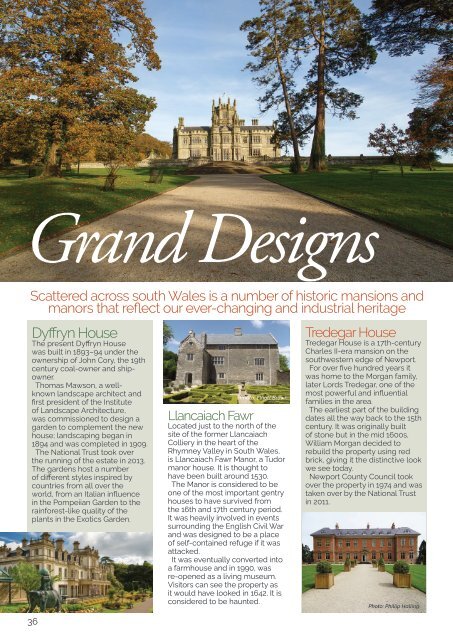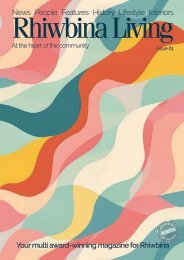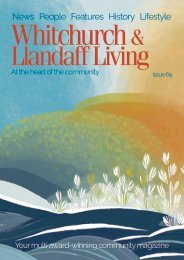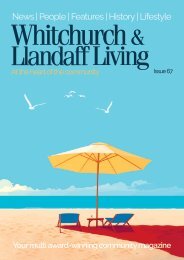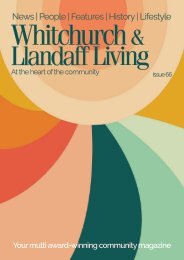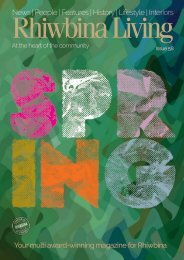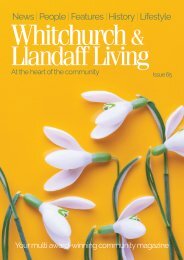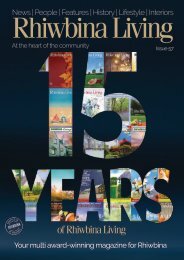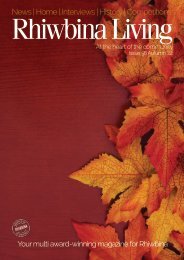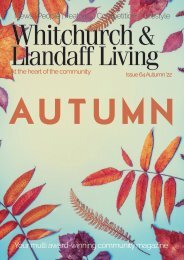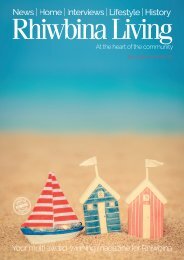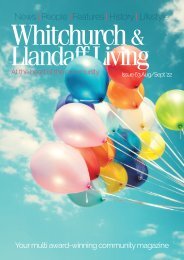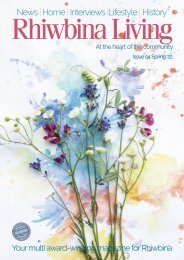Whitchurch and Llandaff Living Issue 68
Issue 68 of the award-winning Whitchurch and Llandaff Living magazine.
Issue 68 of the award-winning Whitchurch and Llandaff Living magazine.
Create successful ePaper yourself
Turn your PDF publications into a flip-book with our unique Google optimized e-Paper software.
Gr<strong>and</strong> Designs<br />
Scattered across south Wales is a number of historic mansions <strong>and</strong><br />
manors that reflect our ever-changing <strong>and</strong> industrial heritage<br />
Dyffryn House<br />
The present Dyffryn House<br />
was built in 1893–94 under the<br />
ownership of John Cory, the 19th<br />
century coal-owner <strong>and</strong> shipowner.<br />
Thomas Mawson, a wellknown<br />
l<strong>and</strong>scape architect <strong>and</strong><br />
first president of the Institute<br />
of L<strong>and</strong>scape Architecture,<br />
was commissioned to design a<br />
garden to complement the new<br />
house; l<strong>and</strong>scaping began in<br />
1894 <strong>and</strong> was completed in 1909.<br />
The National Trust took over<br />
the running of the estate in 2013.<br />
The gardens host a number<br />
of different styles inspired by<br />
countries from all over the<br />
world, from an Italian influence<br />
in the Pompeiian Garden to the<br />
rainforest-like quality of the<br />
plants in the Exotics Garden.<br />
36<br />
Photo: Elliott Brown<br />
Llancaiach Fawr<br />
Located just to the north of the<br />
site of the former Llancaiach<br />
Colliery in the heart of the<br />
Rhymney Valley in South Wales,<br />
is Llancaiach Fawr Manor, a Tudor<br />
manor house. It is thought to<br />
have been built around 1530.<br />
The Manor is considered to be<br />
one of the most important gentry<br />
houses to have survived from<br />
the 16th <strong>and</strong> 17th century period.<br />
It was heavily involved in events<br />
surrounding the English Civil War<br />
<strong>and</strong> was designed to be a place<br />
of self-contained refuge if it was<br />
attacked.<br />
It was eventually converted into<br />
a farmhouse <strong>and</strong> in 1990, was<br />
re-opened as a living museum.<br />
Visitors can see the property as<br />
it would have looked in 1642. It is<br />
considered to be haunted.<br />
Tredegar House<br />
Tredegar House is a 17th-century<br />
Charles II-era mansion on the<br />
southwestern edge of Newport.<br />
For over five hundred years it<br />
was home to the Morgan family,<br />
later Lords Tredegar, one of the<br />
most powerful <strong>and</strong> influential<br />
families in the area.<br />
The earliest part of the building<br />
dates all the way back to the 15th<br />
century. It was originally built<br />
of stone but in the mid 1600s,<br />
William Morgan decided to<br />
rebuild the property using red<br />
brick, giving it the distinctive look<br />
we see today.<br />
Newport County Council took<br />
over the property in 1974 <strong>and</strong> was<br />
taken over by the National Trust<br />
in 2011.<br />
Photo: Phillip Halling


